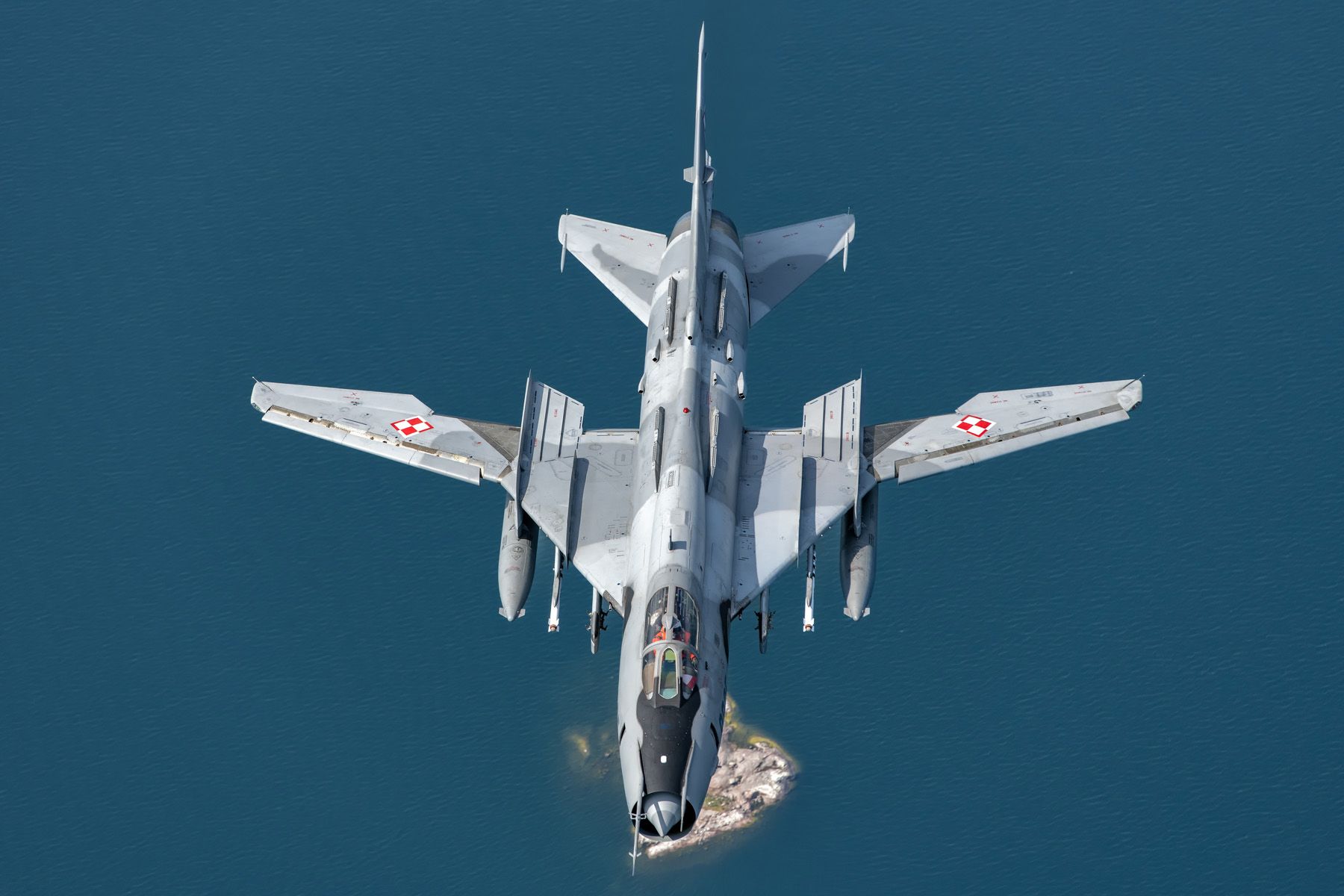As the export version of the Sukhoi Su-17, the Soviet Union delivered the Su-22 (NATO codename ‘Fitter-K’) fighter-bomber to all countries of the Warsaw Pact but Romania. By numbers, Poland was by far the largest operator, and is currently the only one still operating the type although retirement is nearby. This report highlights a detailed description of the aircraft’s systems as well as a brief history of its operations with the Polish Air Force.
Text and photos: Emiel Sloot
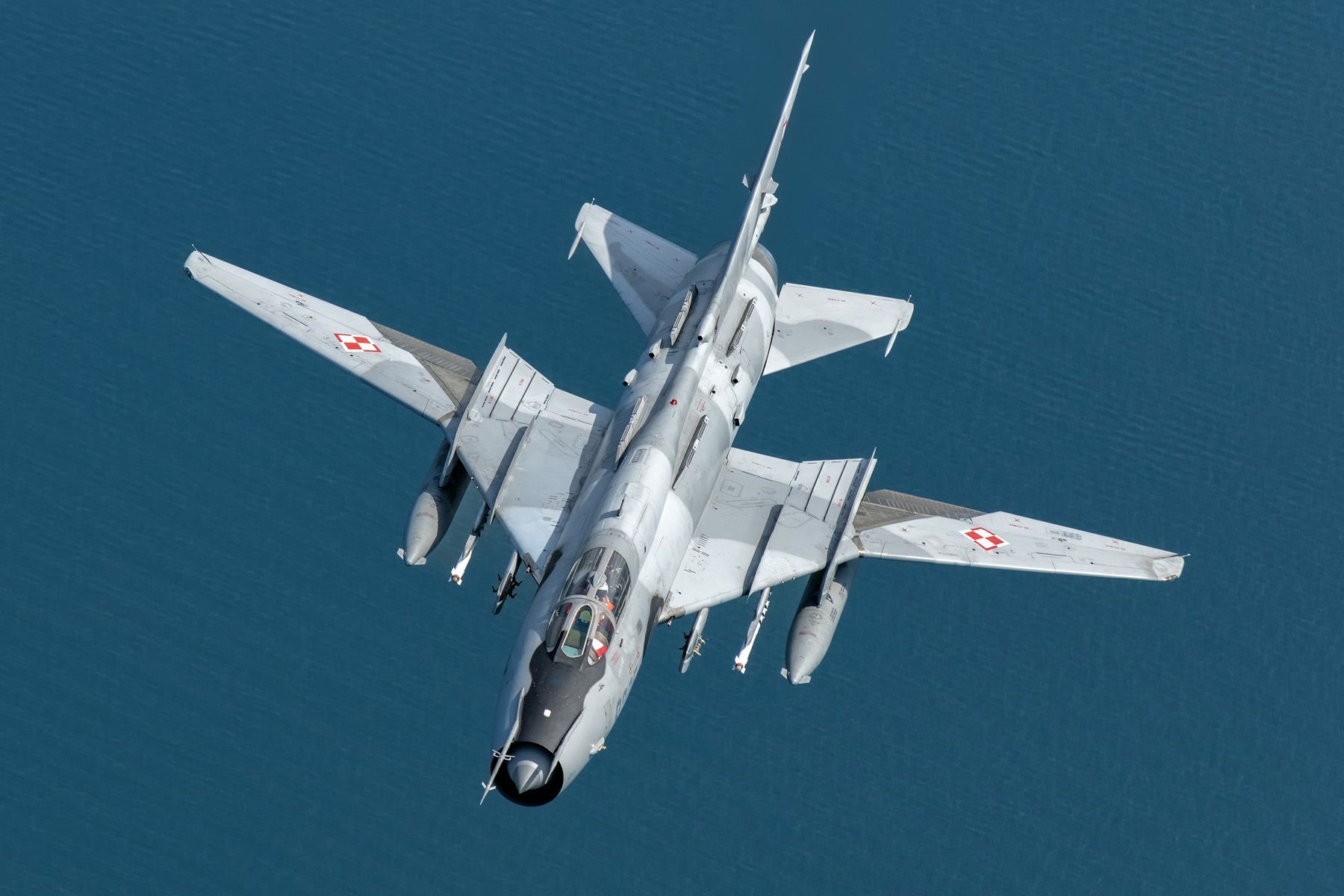
Regiments become squadrons
When the Sukhoi 22 entered service in Poland, the era of Glasnost and Perestroika – the harbinger of the end of the Cold War – was already blossoming. The first aircraft arrived on 28 August 1984, and a total of 110 aircraft would eventually be delivered, consisting of 90 Su-22M4 and 20 dual-seat Su-22UM3K.
Jacek (rank and surname withheld for security reasons), an operational Su-22 pilot with the Siły Powietrzne or Polish Air Force, lists the regiments that initially operated the type: “The first unit that was equipped with these aircraft was the 6 Pułk Lotnictwa Myśliwsko-Bombowego (6 PLMB – 6th Fighter-Bomber Aviation Regiment), based at Piła. By the way, this regiment disbanded in 1998 and its aircraft were divided among the remaining regiments. Next were the 40 PLMB at Świdwin and the 7 Pułk Lotnictwa Bombowo-Rozpoznawczego (7 PLBR – 7th Bomber and Reconnaissance Aviation Regiment) at Powidz. The final unit to receive the type was the 8 PLMB, based at Mirosławiec.”
In 1999, Poland joined NATO and the air force’s organization was restructured by adopting a squadron-based line-up that replaced the regiments. Squadron strength was enlarged to 16 aircraft, compared to 12 for the squadrons that fell under the former regiment structure.
On 1 January 2000, 7 PLBR transformed into 6 and 7 Eskadra Lotnictwa Taktycznego (6. and 7. elt – Tactical Aviation Squadrons), 8 PLMB continued as 8. elt, while 40 PLMB split into 39. and 40. elt. Since the fleet of Su-22s was gradually reduced following the end of the Cold War and the subsequent integration of Poland into NATO, several units were terminated such as 39. elt in 2003 and 8. elt on 30 June 2010. Earlier, in 2006, 6. elt had left Powidz for Poznań-Krzesiny to operate new Lockheed Martin F-16Cs while 7.elt relocated from Powidz to Świdwin in 2007.
“The 40 Eskadra Lotnictwa Taktycznego at Świdwin was the last remaining Su-22 squadron of the Polish Air Force. Since 2010, its home base Świdwin is known as 21 Baza Lotnictwa Taktycznego or 21st Tactical Air Base,” explains Jacek. “The base controls two aviation squadrons that together operate 18 aircraft, being twelve Su-22M4 and six Su-22UM3K.”
The dual seat aircraft are no longer required for conversion training. “Due to the upcoming withdrawal of the type and the ongoing transition of Polish pilots to new types of aircraft, there are no new pilots in training. The amount of flying hours logged by the current pilots, largely depend on the experience level of each individual pilot,” says Jacek.
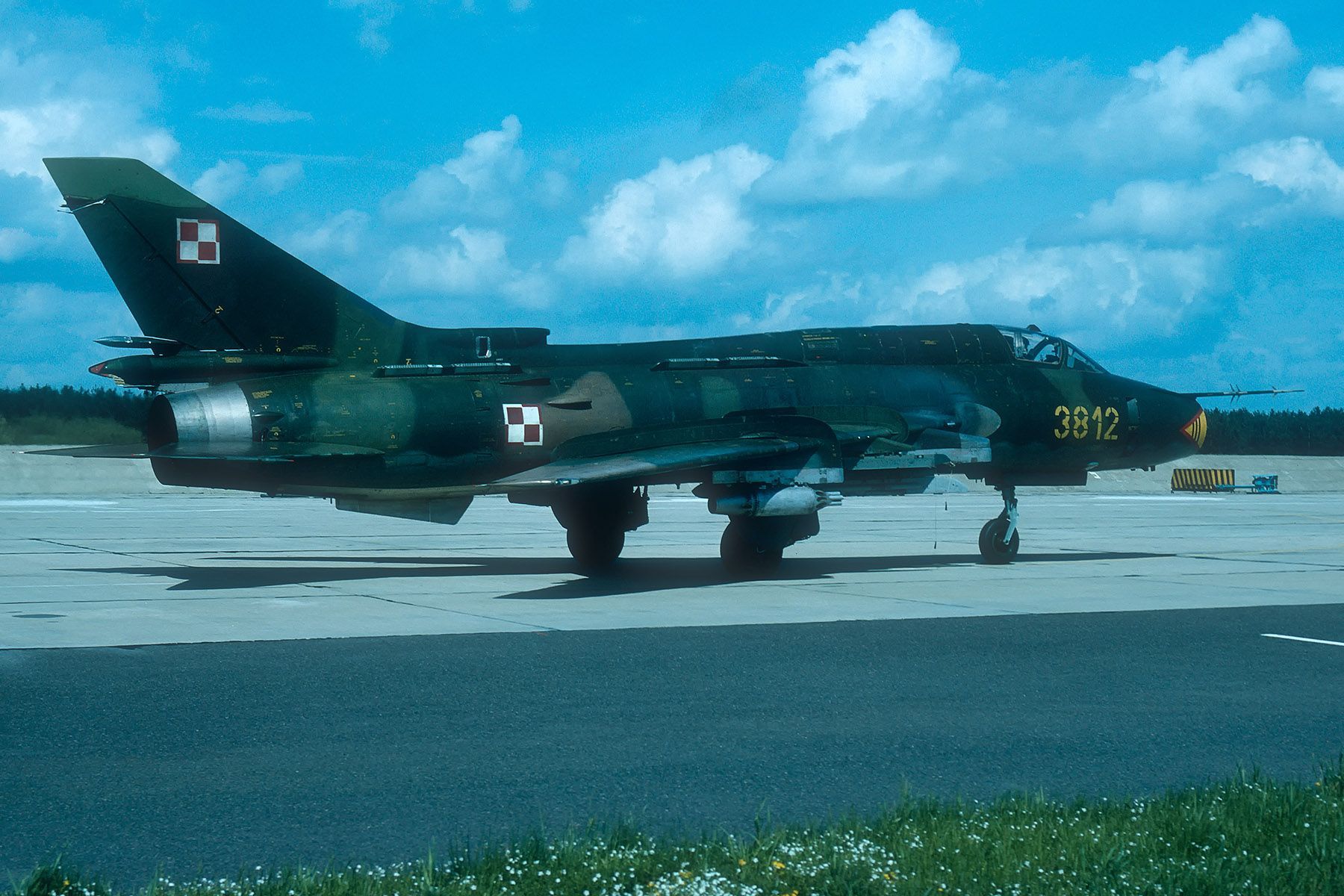
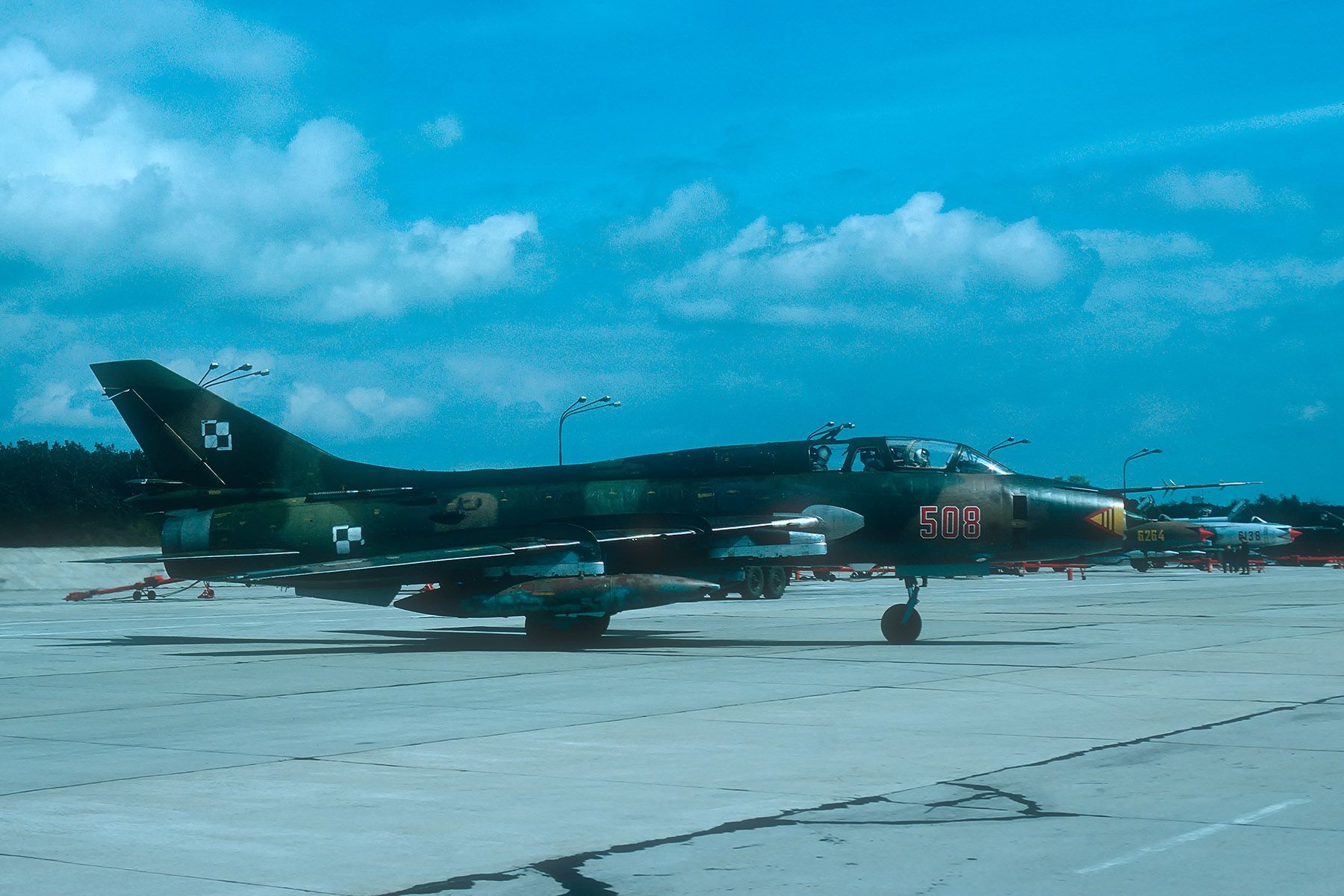
Self-defence and reconnaissance
Although the Su-22 operation and systems are compatible to NATO standard to a certain extend, the aircraft also still feature several Soviet-style systems. Jacek describes a few of these. “First of all, Polish Su-22s do not have any radar or laser designator. However, we do have the Klen-PS integral laser rangefinder, which improves aiming of ballistic munitions. For electronic counter measures, we have the external SPS-141 pod that covers both the front and back of the aircraft and is able to jam ground as well as air threats, but only for self defence. We also have the SPO-15ŁM radar warning receiver, able to inform the pilot about the type of radar; the direction of the threat; the relative position – above or below; defines the radar that is the most dangerous; and the mode of radar, either lock or search. And then there is the ASO-2W chaff/flare system, located on the upper side of the fuselage, which functions in either automatic or manual override mode.”
“For our aerial reconnaissance task, we still use the KKR-1 external pod. It is fitted with an A-39 day camera, a PA-1 panoramic day camera and a UA-47 night camera that works with flares. The system also has a radar transmitter/receivermodule that is able to define the precise position of all surveillance radars working in wave lengths of 1.5 to 3 cm. At an altitude of 10,000ft (3,280m), it has a range of 160NM (296km). To allow our Su-22s to operate more easily alongside other NATO aircraft, the remaining airframes were modernized some years ago and received new avionics, new radiosand an IFF/transponder, although the latter lacks Mode 5.”
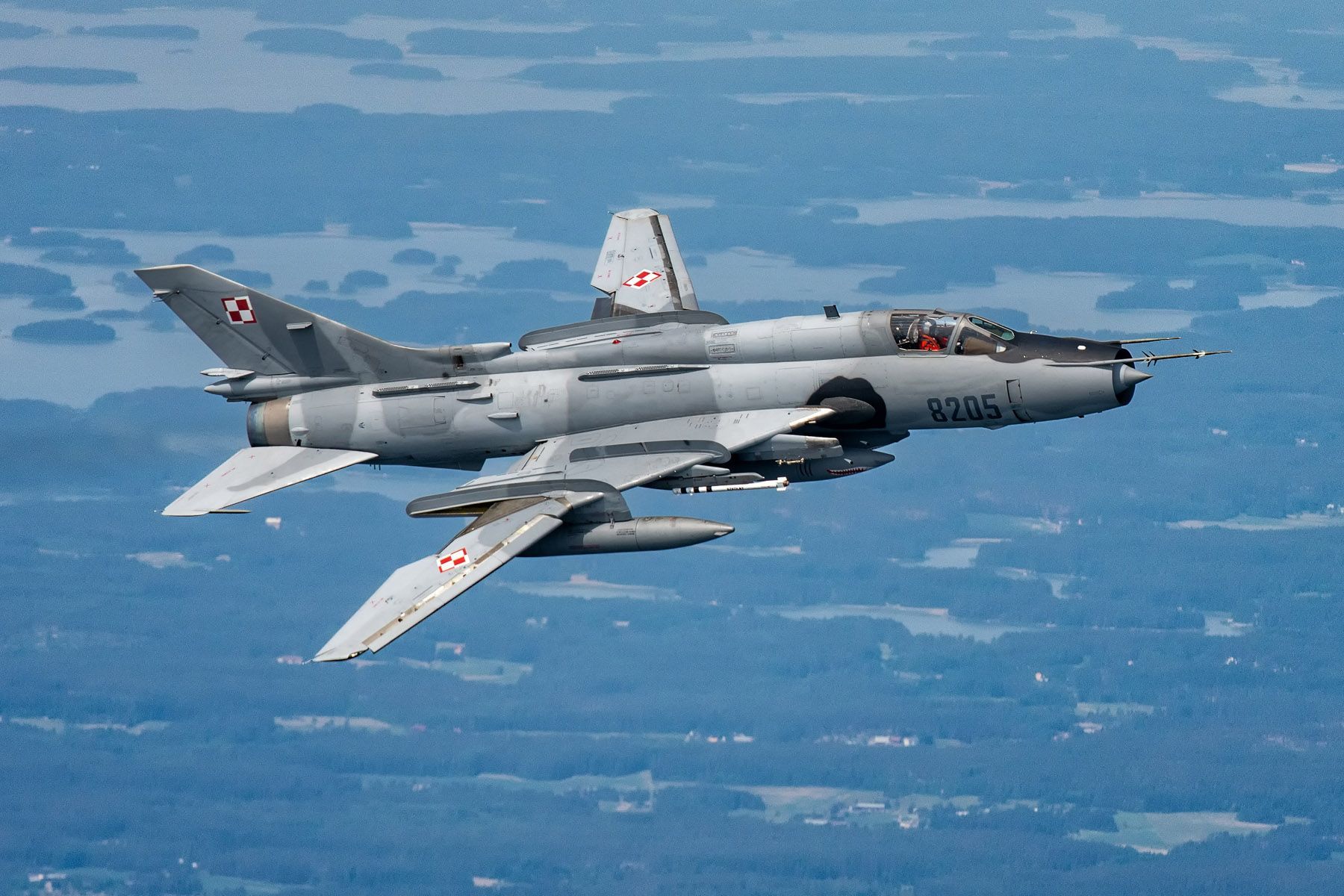
Soviet-style weapons
In view of ordnance, the list of hardware is rather old-style like the before mentioned systems. Guided missiles or bombs are missing from the catalogue. “In order to carry western-produced munitions, additional modernizations would be required,” says Jacek.
The options to arm the aircraft are still considerable. “First, we have two internally-mounted NR-30 guns. These contain 80 rounds each of 30mm cartridges that fire at a rate of 850 rounds per minute. In addition, we can carry up to four GSz-23 gun pod that each contains two 23mm guns with 260 rounds, firing at a rate of 3.400 round per minute. The GSz-23 has three different modes of firing, including a backward mode. For additional self defence, two R-60 ‘Aphid’ infrared missiles can be mounted, having a maximum range of 4NM (7.4km).”
A variety of inert bombs and rockets is available to support the aircraft’s primary role as a fighter-bomber. “Either 20 FAB-100 (100kg), 10 FAB-250 (250 kg) or 8 FAB-500 (500kg) unguided bombs can be carried, while the INS navigation system provides a correction to the weapon system resulting in an accuracy of up to 30m for pre-programmed targets. And, up to six launchers can be fitted that each contain either 16 or 32 S5 unguided rockets. These have a calibre of 57mm and a range of 0.6 to 1NM (1.1 to 1.8km).”
The Su-22 can also carry the KMGU cluster dispenser. Although a large number of countries have signed the Convention of Cluster Munitions treaty to ban this kind of weapons, Poland has not done so.
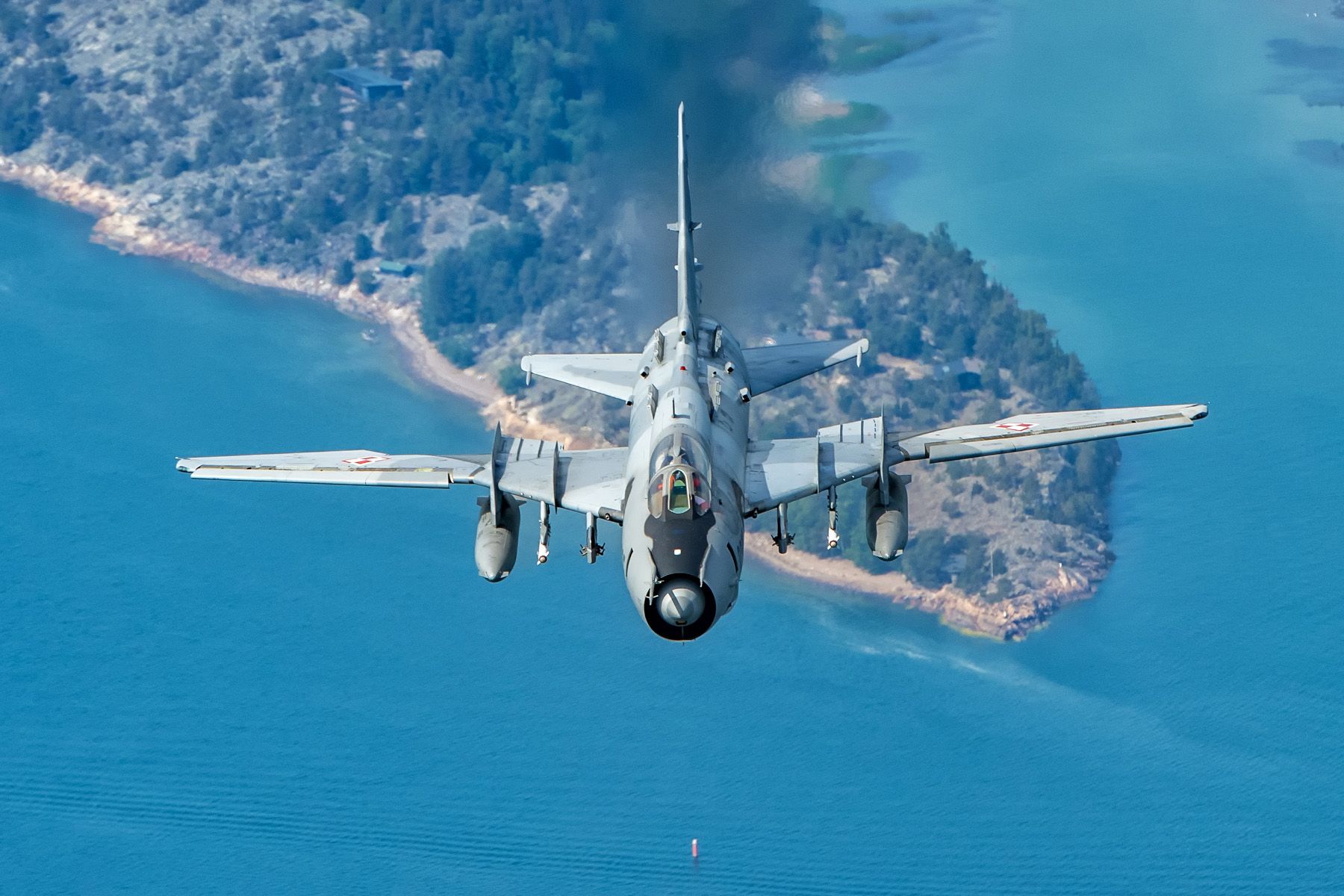
Flying characteristics
Withdrawal of the Su-22 in Poland was initially planned for 2014. However, as the purchase of a replacement attack platform was postponed, the Ministry of Defence decided to keep a small number of Su-22s on duty, following an update programme. This particular project was approved in 2015, covering the 18 aircraft that are presently still in service. The programme included the installation of an RS-6113-2 VHF/UHF radio, for which a new blade antenna was mounted on top of the fuselage. Other new avionics included TACAN, ILS and GPS. Furthermore, a new flight parameter recorder was installed, while new cockpit instruments indicating in international standard aviation units like knots and feet replaced the older metric ones. Finally, the fleet was resprayed in a new grey paint scheme replacing the old camouflage pattern. The upgrade was carried out by Wojskowe Zakłady Lotnicze 2 (WZL-2 – Military Aviation Plant 2) at Bydgoszcz.
Jacek expresses a positive impression on the Su-22’s specific handling characteristics as a pilot, although he would qualify these as demanding. “When flying the aircraft, the stick forces are very high. The wings are endowed with heavy mechanics and feature large inboard flaps for take-off and outboard flaps for landing. The variable wing geometry requires much attention, as the pilot must take into account several operational limitations related to the position of the movable section of the wing and its high-lift devices. The automatic flight control system, although aiding the pilot in many situations, is not fly-by-wire and is not very pilot-friendly. However, a well-trained pilot is able to get much out of the aircraft. The aircraft handles very well in low-altitude high-speed flight, providing good manoeuvrability during for example strafing flights. It can also attain pretty long range and endurance. Overall, it is a rugged, reliable fighter, and a very good platform for weapons delivery. The navigation and attack systems are vintage, but also virtually indestructible. The engine is also very old, but reliable with a remarkable resistance to FOD.”
Noteworthy is that the single-seat Su-22M4 has a slightly restricted maximum speed. This is caused by the fixed nose cone, compared to that of the dual variant. The nose cone of the -M4 houses the laser rangefinder and is therefore not able to slide forward during high speed to reduce the intake air flow.

The end
While the aircraft are nearing the end of their service career, the final Su-22 unit has joined a number of international exercises with their updated aircraft. “Polish Su-22s participated in exercises like Ample Strike and Spring Storm in Estonia, and Hedgehog that took place in 2022 along the Estonian-Latvian border. We also participated in Exercise Aurora in Sweden in 2023, says Jacek. “When the fleet was modernized between 2015 and 2017, the aircraft’s service life was extended for another 800 flying hours and 1,200 landings, or 1,600 landings for the two-seaters.”
“The 21st Tactical Air Base will receive both a squadron of Lockheed F-35A Lightning II and one with the KAI FA-50. Given the roles of the Su-22, the FA-50 can be seen as its natural replacement,” Jack concludes.
In 2022, Poland ordered 12 FA-50GF block 10 and 36 FA-50PL to replace their Su-22s and MiG-29s. Meanwhile, the first FA-50s have been delivered to Poland. The final landing of an operational Su-22 soaring European skies is near, marking the end of this remarkable Cold War machine. ■
